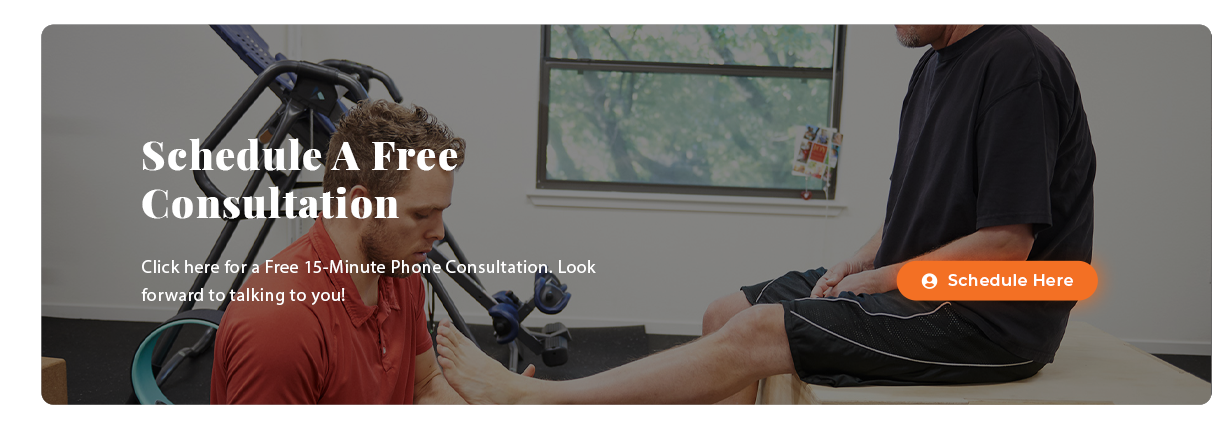“Understanding the mechanics behind tennis elbow and incorporating targeted exercises can be pivotal in managing and overcoming this common condition.” – Dr. Emily Jones, Sports Medicine Specialist
Tennis elbow, also known as lateral epicondylitis, isn’t just reserved for athletes. It can affect anyone whose activities involve repetitive arm movements, leading to discomfort, pain, and limited mobility in the elbow. Tennis elbow is a common injury that causes pain and tenderness on the outside of the elbow. It frequently occurs due to overuse of the forearm muscles, especially in activities like tennis, weightlifting, and other racquet sports.
While resting and avoiding the aggravating activity are crucial for initial healing, incorporating specific exercises can significantly improve pain relief, strengthen the muscles, and prevent future flare-ups.
Understanding Tennis Elbow
Before discussing the best exercises for tennis elbow, it’s essential to grasp what tennis elbow is. This condition results from overuse or repetitive stress on the tendons in the forearm, specifically those attached to the outer part of the elbow. Activities such as tennis, gardening, typing, or any motion involving gripping and wrist extension can trigger this condition.
The Role of Exercises
Exercise is a cornerstone in the management of tennis elbow. And when done correctly and consistently, these exercises help strengthen the muscles, improve flexibility, and alleviate the strain on the affected tendons.
Seven Best Exercises for Mitigating Tennis Elbow Pain
Here’s your guide to the best elbow exercises for tackling tennis elbow:
1. Wrist Extensions
This classic exercise directly targets the extensor muscles, which are often overused in tennis elbow.
- How to:
-
- Hold a light weight (dumbbell or water bottle) in your hand, palm facing down.
- Slowly raise your hand back, keeping your forearm still.
- Hold for a second at the top, then slowly lower.
- Repeat for 10-12 repetitions, 3 sets.
2. Wrist Curls
Strengthening the opposing flexor muscles creates balance and reduces stress on the extensors.
- How to:
-
- Hold the weight with your palm facing up.
- Slowly curl your wrist towards you, bringing your hand closer to your forearm.
- Hold for a second at the top, then slowly lower.
- Repeat for 10-12 repetitions, 3 sets.
3. Eccentric Wrist Curls
This variation involves a slower and more controlled lowering phase, which can further enhance strengthening.
- How to:
-
- Hold the weight with your palm facing up.
- Slowly curl your wrist towards you, taking 4-5 seconds to complete the movement.
- Lower your hand back down quickly.
- Repeat for 10-12 repetitions, 3 sets.
4. Supination and Pronation
These exercises work the forearm muscles responsible for rotating your hand.
- Supination:
-
-
- Hold the weight with your palm facing down.
- Slowly turn your hand so your palm faces up.
- Hold for a second at the top, then slowly return to the starting position.
- Repeat for 10-12 repetitions, 3 sets per direction.
-
- Pronation:
-
- Hold the weight with your palm facing up.
- Slowly turn your hand so your palm faces down.
- Hold for a second at the bottom, then slowly return to the starting position.
- Repeat for 10-12 repetitions, 3 sets per direction.
5. Reverse Wrist Curls
This exercise targets the deep forearm muscles that contribute to wrist stability.
- How to:
-
- Place your forearm on a table with your hand hanging off the edge, palm facing down.
- Hold a weight in your hand.
- Slowly curl your wrist up, bringing your hand closer to your forearm.
- Hold for a second at the top, then slowly lower.
- Repeat for 10-12 repetitions, 3 sets.
6. Finger Extension and Spreading
Strengthening the finger muscles can reduce stress on the forearm muscles.
- Finger Extension:
-
- Place your hand flat on a table, fingers together.
- Slowly lift your fingers off the table, keeping them straight.
- Hold for a second, then slowly lower.
- Repeat for 10-12 repetitions, 3 sets.
- Finger Spreading:
- Place your fingertips together on a flat surface.
- Slowly spread your fingers apart as far as you can comfortably.
- Hold for a second, then slowly bring your fingers back together.
- Repeat for 10-12 repetitions, 3 sets.
7. Grip Strength Exercises
Strengthening your grip helps with everyday activities and can also contribute to tennis elbow recovery.
- Squeeze a tennis ball:
-
-
- Squeeze a tennis ball for 5-10 seconds, then relax.
- Repeat for 10-12 repetitions, 3 sets.
-
- Grippers:
-
- Use hand grippers to apply resistance and strengthen grip.
- Squeeze the grippers until they meet resistance, then release.
- Repeat for 10-12 repetitions, 3 sets.
Tips for Tennis Elbow Exercise Success:
-
Start slowly and gradually increase the weight, repetitions, and sets as you get stronger.
-
Maintain proper form throughout the exercises to avoid further injury.
-
Listen to your body and stop if you experience any pain.
-
Use ice or heat therapy to reduce inflammation and pain.
Swinging Into a Life Free of Tennis Elbow Pain Through Exercise
Consistency is key when it comes to managing tennis elbow. Integrating these elbow exercises into your daily routine, along with adequate rest and proper technique modification in your activities, can significantly contribute to easing discomfort and promoting healing.
Remember, gradual progression and listening to your body are essential. If any exercise exacerbates pain or discomfort, it’s crucial to stop and reassess. By incorporating these exercises under professional guidance and maintaining patience, you’re well on your way to reclaiming comfort and functionality in your elbow, paving the way for a pain-free life.
Treating Chronic Elbow Pain: Pain and Performance Solutions
For elbow joint pain, the first step to finding pain relief is for us to learn about you and your pain issues. During your first appointment, we’ll ask a series of questions to learn about your present discomfort as well as any history of pain.
Afterwards we’ll conduct a full examination to determine which form of treatment is needed to help you on your road to recovery. And one of the most effective treatments for soft tissue and joint pain issues is Active Release Techniques®, or ART®.
Your trust in us is key, as is your openness and honesty. Ultimately, getting your body working properly and healthy is the only way to achieve total recovery. So, don’t hesitate to reach out. We are here to help and will answer any, and all questions that you may have.
You can reach us at (707) 636-4404 or by filling out our online contact form.

Frequently Asked Questions about Tennis Elbow
1. What exactly is tennis elbow?
Tennis elbow, or lateral epicondylitis, is a painful condition where the tendons in your elbow are overworked, usually from repetitive motions of the wrist and arm. This isn’t just a problem for athletes; anyone involved in activities that require repetitive arm movements, like gardening or typing, can develop this condition. The pain mainly occurs on the outside of the elbow and can affect your ability to grip objects or perform everyday tasks.
2. What causes tennis elbow?
Tennis elbow is primarily caused by overuse and repetitive strain. Activities like playing tennis, lifting weights, or even frequent typing can strain the tendons that attach to the lateral epicondyle of the elbow. This repeated strain leads to small tears and inflammation, resulting in pain and tenderness. It’s essential to identify and modify the activity causing the strain to prevent further damage.
3. How can I tell if I have tennis elbow?
If you have tennis elbow, you’ll likely feel pain and tenderness on the outside of your elbow. This pain may extend into your forearm and wrist. Common signs include a weak grip, difficulty lifting or holding objects, and increased pain when twisting your arm (like turning a doorknob or shaking hands). If these symptoms sound familiar, it’s a good idea to see a doctor for a proper diagnosis.
4. What are the best exercises for tennis elbow?
Exercises can be highly effective in managing tennis elbow. Some of the best include:
- Wrist Extensions: Strengthen the extensor muscles by slowly lifting a light weight with your palm facing down.
- Wrist Curls: Balance the flexor muscles by curling your wrist with a weight, palm facing up.
- Eccentric Wrist Curls: Focus on the slow lowering phase to enhance strengthening.
- Supination and Pronation: Rotate your forearm with a weight to work the muscles responsible for hand rotation.
- Reverse Wrist Curls: Target deep forearm muscles with a wrist curl, palm facing down.
- Finger Extension and Spreading: Strengthen finger muscles to reduce forearm stress.
- Grip Strength Exercises: Use a tennis ball or grippers to enhance grip strength and aid recovery.
5. How long does it take for tennis elbow to heal?
The healing time for tennis elbow varies based on the severity and how well you adhere to treatment. Generally, mild cases can improve in a few weeks with rest and proper exercises. However, more severe cases might take several months. Consistently performing recommended exercises and avoiding activities that exacerbate the pain are crucial for a quicker recovery.
6. Can tennis elbow be prevented?
Preventing tennis elbow involves a mix of proper technique and strengthening exercises. Ensuring you use the correct form in activities like tennis or weightlifting can reduce the risk. Incorporating forearm strengthening and stretching exercises into your routine helps build resilience against repetitive strain. Taking regular breaks and using ergonomic tools for activities like typing also play a vital role in prevention.
7. Is surgery ever required for tennis elbow?
Surgery is typically a last resort for tennis elbow and is considered only if conservative treatments fail after six to twelve months. Procedures aim to remove damaged tissue and promote healing. However, most people find relief through non-surgical methods, such as physical therapy, medications, and lifestyle modifications.
8. Are there any risk factors for developing tennis elbow?
Yes, several risk factors can increase your chances of developing tennis elbow. Age plays a role, as it most commonly affects adults between 30 and 50 years old. Occupations and hobbies involving repetitive arm and wrist movements, like carpentry, painting, or playing musical instruments, can also elevate the risk. Additionally, improper techniques in sports or activities contribute significantly to the likelihood of developing this condition.
9. Can children get tennis elbow?
While less common, children can develop tennis elbow, especially if they engage in activities that involve repetitive arm and wrist movements. Sports like tennis, baseball, or gymnastics can put them at risk. It’s important for kids to use proper techniques and take breaks to prevent overuse injuries. If a child complains of elbow pain, it’s advisable to consult a healthcare provider for appropriate diagnosis and treatment.
10. What other treatments are available for tennis elbow?
Besides exercises, other treatments for tennis elbow include:
- Rest and Ice: Reducing activity and applying ice can help decrease inflammation and pain.
- Physical Therapy: A therapist can provide specialized exercises and treatments like ultrasound or massage.
- Medications: Nonsteroidal anti-inflammatory drugs (NSAIDs) can alleviate pain and swelling.
- Braces or Supports: Using a brace can help reduce strain on the tendons.
- Steroid Injections: These can provide temporary relief but are generally not a long-term solution.
- Shockwave Therapy: This non-invasive treatment uses sound waves to promote healing.
By combining these treatments with a tailored exercise regimen, you can effectively manage and overcome tennis elbow.

